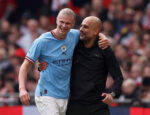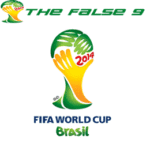The death of football at its most beautiful peak, is nigh
‘Football is the beautiful game.’ A statement we have heard since childhood. Words which resonate in the heart of every football lover as the whistle is sounded to initiate a fresh rendezvous between teams. But as we move into a new decade, this immortal sentence needs to be re-examined, and perhaps its immortality reconsidered.
First, let’s trace the history of what I like to call the ‘footballing aesthetic’. The footballing aesthetic began to form definitively in the country which still holds the record for the highest number of World Cups, Brazil. The Brazilians dominated world football in the immediate aftermath of World War II, and did so with panache. They played football like it was the only thing which mattered, which, to an extent, was true for most Brazilians. The manager was but a figurehead for the Brazil national team, simply assigning positions to players. Even that basic instruction was disobeyed on many occasions. Brazilians, a passionate and artistic people, danced on the pitch with the ball at their feet. The ball certainly went into the back of the net, but it was the build-up which was worth watching. Small, physically unimposing players weaved around defenders as their leg muscles contorted like water. There was a fluidity in their game, which is probably unparalleled even today. The goal of football, for Brazil, was not just to win, but to enjoy themselves while winning. It was simple, yet luxuriant football, and the Brazilians had the skill to indulge in that while the likes of England and France haggled for possession of the ball. If we apply modern standards to the Brazilian ‘samba’ of the 50s, perhaps we will conclude that Brazilians were not positionally aware, tactically sound or even physically fit. But to the original aestheticians of football, it didn’t matter. They had captured the imagination of the globe with their feet, and nothing else mattered.
The 60s brought an increasing sense of competitiveness in football, with the emergence of club football. Earlier, the World Cup was the only platform for players and managers to distinguish themselves. But now, the growing importance of club competitions meant that a greater numbers of footballers and styles would come into the mainstream. And therefore, the footballing aesthetic also evolved. The 60s were responsible for initiating the process which has made the Brazilian ‘samba’ an unviable tactic in modern football. In that process, football was segregated into two main schools of thought, a division which has persisted till date. This segregation was created by two great personalities, Dutchman Rinus Michels and Argentine Helenio Herrera. Both managers took an existing style of football, and made it their own.
Rinus Michels took over as Ajax head coach in 1965, and changed football forever. His team played a free-flowing, attacking game which matched the erstwhile Brazilian ‘samba’, not in terms of individual talent, but in terms of flair and creativity from multiple, complementary players. Michels completely changed how players look at space on the football pitch. The Brazilians saw space as goal opportunities, but Michels saw it as something else entirely: something to occupy. The idea of fixed positions were eliminated, and something that we now call a ‘transition formation’ was introduced. One formation to keep the team cogent, and the other to occupy every inch of space on the pitch. This required immense adaptability for players, and needed them to be ‘total’ in terms of their understanding of the game, thus leading to the nomenclature, ‘Total Football’. A midfielder needed to know how to read the game well enough to intercept intelligent through balls, and a forward needed to know how to play balls in behind for full-backs, who needed to know how to make runs down the flanks. It was fluid football at its very best. If the team had sufficient synergy, the entirety of the match could potentially be played in the opposition half.
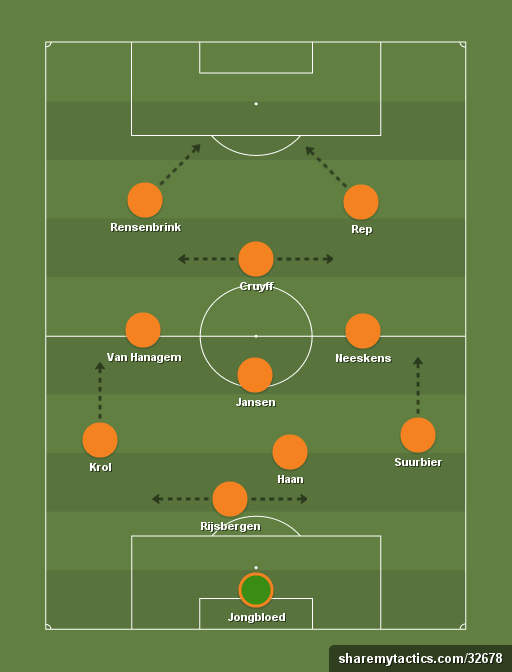
Of course, Total Football had its drawbacks. If the opposition could track the movements of the players, distribution could be severely limited and possession easily lost. But looking at Michels’ tactic from a purely aesthetic perspective, it was beauty personified. The positional fluidity was never forced, always spontaneous. It was human ingenuity at its most beautiful best, combining the cerebral and the physical aspects of the game like never before. Uniquely, it brought out the best in naturally graceful players like Johan Cruyff, who enjoyed virtually unlimited creative liberty. The Ajax team floated from one end of the pitch to the other, the ball the oar, the eleven the boat, the coach the oarsman.
Helenio Herrera’s team played a completely antithetical style of football, which is called the ‘Catenaccio’. He was appointed as Inter Milan manager in 1961, and assembled a squad called ‘Grande Inter’, which won 7 titles in his 7 years at the club. Herrera created the first proper ‘tactic’ in the history of football. Both the Brazilian samba style and the Dutch Total Football were essentially philosophies, dialectics on what to do with a football on the pitch. But Catenaccio laid emphasis on what to do without the ball, as well as with it. It was the original pragmatic footballing school of thought, with the underlying philosophy that the sweet taste of victory invalidates everything that precedes it.
Whereas Total Football was about fluidity and movement, Catenaccio was about structure and organisation. The brilliance of Catenaccio is harder to appreciate for the layman, but that does not take away from its genius. Herrera employed a four-man block, constituting two central defenders and two midfielders. A libero was the creative force behind the block, while a playmaker was the creative force above it. The full-backs, for the first time in history, took on a predominantly attacking role. They cut in from the flanks and created opportunities for the main no. 9 and the shadow striker. They even found the back of the net themselves. Visually, Catenaccio was as beautiful as Total Football. It relied on defensive organisation, and man-marking, and depended solely upon pace and acceleration for goals. But the drawing board work that went on behind Catenaccio was beautiful. The sheer rigour of the system, and its infallibility. Herrera once said, “The football moves faster without a pair of legs behind it.” Despite seemingly invalidating a number of beautiful footballing tactics, it was true and added greatly to the aesthetic of the game.
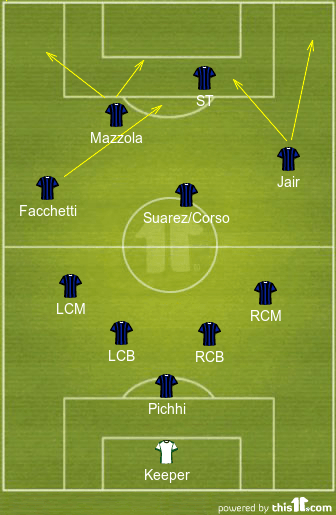
An argument can also be made that Catenaccio was more cerebral than Total Football. While Michels gave his players freedom and was largely dependent on their technical ability to deliver results, Herrera had extremely detailed game-plans. Tactically, Catenaccio was more comprehensive than Total Football as it could mould itself to the necessities of every single game. If the formational discipline of Grande Inter is observed, it is clear to see the beauty in the intricacy of Herrera’s tactics. There are specific responses to every kind of attack from the opposition, and carrying that out in a disciplined manner should be a creditable achievement. Also, football is about adrenaline. The goals scored by teams employing Catenaccio were counter-attacks, which require a lot of pace and awareness (especially in terms of beating the offside trap) and are quite entertaining.
This duopoly of footballing aesthetics remained for a very long time. There were small changes to the tactics themselves. For instance, Giovanni Trapattoni made certain changes to Catenaccio’s marking and offensive system to create the more modern ‘Zona mista’ while Johan Cruyff added more restraint to Total Football to lay the foundations for tiki-taka. But on a larger scale, footballing aesthetics remained quite stagnant. The archaic stereotypes of the organised, defensive Catenaccio and the free-flowing, attacking Total Football continued without any changes even to the footballing dynamics of the nations they originated in. Football was still a very beautiful game, with the likes of Barcelona, Ajax, AC Milan and Liverpool continuing to play football based on these two classical philosophies. But as the millennium came close to its end, a new style of play emerged. Again, a Dutchman was at the helm of this sea change. Louis van Gaal again redefined the parameters of football with his emphasis on ‘the system’, his system being that of ‘Juege de posicion’, positional play.
Johan Cruyff, one of Rinus Michels’ key players at Ajax, was said to be the great coach of the 90s, adapting Total Football for the modern game. But I believe that it was his younger compatriot Louis van Gaal, who deserves greater praise with respect to coaching style. Van Gaal made revisions to Total Football which completely changed football, and initiated a chain reaction which led to the further development of the footballing aesthetic in the 21st century. The principles of Total Football and Catenaccio remained the same in the new millennium, but with more refinements, something which was enabled by Van Gaal more than anybody.
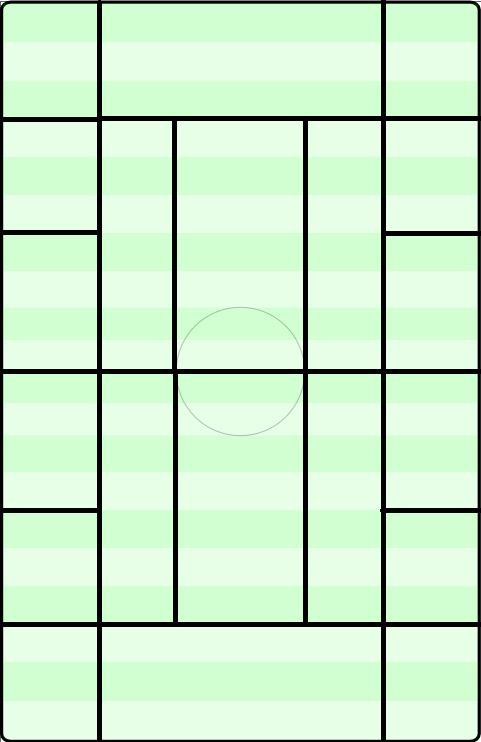
Positional play is a very theoretical and academic approach to football, and is very detailed. Van Gaal implemented it at Ajax, the playground of choice for most footballing innovators. It essentially breaks up the pitch into four vertical zones and a variable number of horizontal zones. Each zone are assigned players specifically, and a formation is built from there. These players have instructions which are a function of a variety of factors, including the intensity of the opposition press, the physicality of the opposition, the extent of the lead, etc. In a way, Juego de Posicion is Catenaccio’s organisational rigour extrapolated to the entire pitch. But unlike Catenaccio, positional play often leads to visually compelling football on the pitch. It is not just cerebrally appealing, but aesthetically appealing. Van Gaal’s results at Ajax were the main reason he was poached by Barcelona to replace Cruyff as a long-term manager. Unfortunately, it did not work out as positional play is the means to achieve a coherent working tactic, not the end. Van Gaal was too rigid with his positional play, being unable to accommodate stars like Rivaldo. But what was fundamentally his idea enabled the creation of a new age footballing aesthetic duopoly, through two of his students, a player and a staff member.
Naturally, it was the staff member who took the first step towards the creation of the 21st century footballing aesthetic. His name was Jose Mourinho, ‘the Special One’. He left Barcelona and had short stints at Benfica and U.D. Leiria before taking over at Porto in 2002. In the 2003/04 season, he defied all odds to win the treble with Porto and was hired by Roman Abramovich to manage Chelsea. In England, Mourinho changed how teams approached the game in the most competitive league in the world.
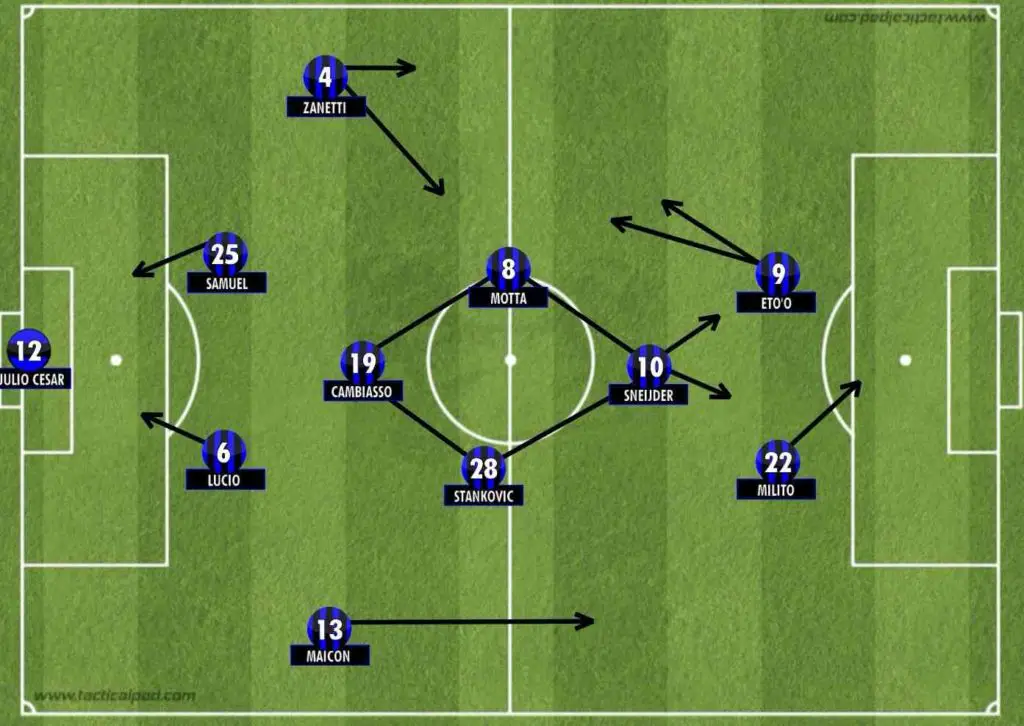
Mourinho’s tactics were based on Catenaccio, but the amount of detail that went into it was greater than ever before. The Special One studied his opponents extremely closely (he was himself an astute scout), equipped with a very able scouting team. Everything from the height of an opposition player to his tendency to make try risky passes, came into careful consideration (which was an aspect of positional play). A low defensive block was employed, but with no sweeper behind it. The midfield set up in a second, parallel block while there was a winger to initiate the counter-attacks. The structure of his blocks were a thing of beauty, the summit of tactical football. The defence was supported by two pivots, and the block carried out zonal marking, a strategy introduced to the game by Total Football. With the middle of the park crowded out, the only option opposition sides have are the flanks. But since cutting inside will lead to instant pressing, their options are again limited to crosses. But since Mourinho’s teams always had tall, physically imposing centre-backs, dealing with crosses was never a problem. Thus, it was a complete shutdown of the opposition by borrowing the best aspects of both Total Football and Catenaccio. Mourinho’s football is the epitome of compactness in defence, and its structural strength is indeed a huge contributor to the modern footballing aesthetic. Unlike Catenaccio, which didn’t need especially intelligent midfielders, Mourinho’s 4-3-3 or 4-2-3-1 relied heavily on the pivot’s ability to read the game. And unlike Total Football, which used zonal marking as part of an interchangeable system, Mourinho’s defensive block marked in an organised manner. The beauty in the Special One’s tactics are not apparent on the pitch, but they remain beautiful. Mourinho borrowed aspects of Juego de Posicion, Total Football and of course, Catenaccio to create a style whose beauty lay in its strength, malleability and rigour. Jose Mourinho has been criticised for his seemingly negative football, but that is a superficial criticism. Football is played as much with the mind as it is with the body, and it is unwise to assume that structural organisation doesn’t require intelligence. The aesthetic beauty of such tactical setups lay in that intelligence, that awareness and that presence of mind.
In 2008, Mourinho’s domination over the footballing aesthetic was broken, by one of the players he had worked with earlier in his career, Pep Guardiola. He took over from Frank Rijkaard as Barcelona manager as a 37-year old upstart, and delivered 14 titles in 4 years at the club. A player under both Johan Cruyff and Louis van Gaal, Guardiola’s team played perhaps the most visually beautiful football of the 21st century.
Guardiola implemented a version of tiki-taka, Cruyff’s modification of Total Football. Like Van Gaal, the system was king for Guardiola. A structure was slowly assembled during a match, with the players exchanging passes to set up positional solidarity which matched that of Mourinho’s block in terms of rigour. A three-man narrow midfield played short passes, and tried to draw opposition players out of position before then finding a player hugging touchline to spread out play. This continued, with the ball gradually moving up the pitch before a killer ball was found and the goal scored. Mirroring Total Football, tiki-taka implied that the entire game was played in the opposition half. Juego de Posicion was implemented and players needed to make specific passes in specific situations. The goalkeeper was often involved in build-up play, and attacks almost always started from the back. The idea of the midfield triangle, which was instrumental in Mourinho’s success, was used differently and quite brilliantly by Guardiola. He used the triangle to have numerical superiority in the middle of the pitch, which later became the norm at most top clubs in Europe.
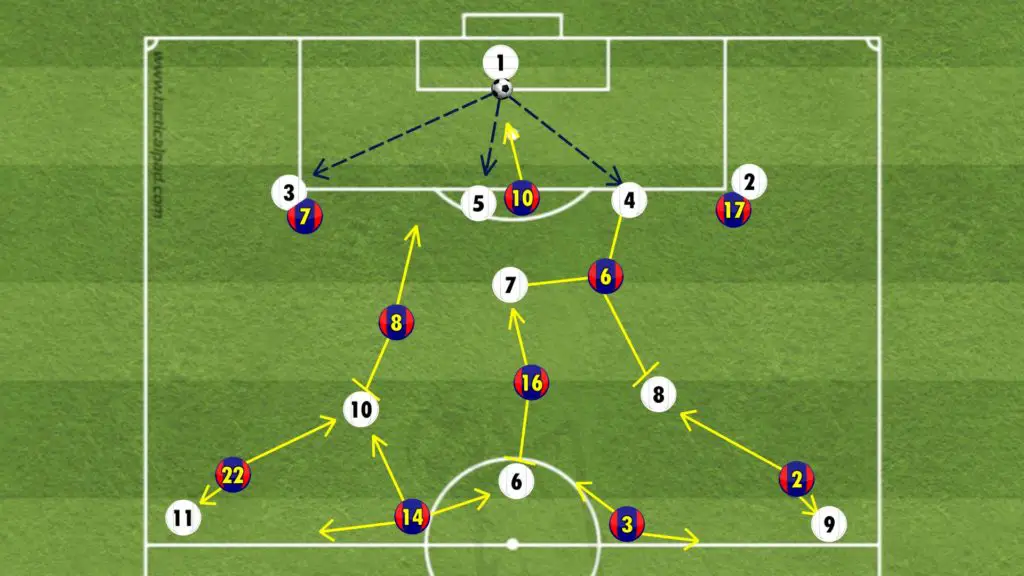
Tiki-taka did not have the fluidity of Total Football or the structural organisation of Catenaccio, but it was perhaps more beautiful than both of them. It was the simplicity of tiki-taka which was beautiful. The word ‘simple’ should not be seen pejoratively here (as it should be with English football), but rather, as a testament to the chequered history of football. After all these experiments by some of the greatest minds of the sport, Pep Guardiola told his players to simply play passes to the nearest man and through this, became one of the all-time greats. The role of Lionel Messi cannot be emphasised enough, in his system, but it was exceptional regardless. Tiki-taka is careful, considered football. It relies on the intelligence of the players, and little else. If the ball is lost, it is easy to recover as it cannot be too far away by definition. The footballing aesthetic’s greatest proponent is modern-day Barcelona, despite recent failures. In tiki-taka, the football itself is given more importance than in any other tactical style, even Total Football. It needs to kept for the team to succeed, something that seems obvious when thinking in fundamental terms. Tiki-taka is relaxing football, both to the viewer and to the players. Of course, they need to work hard to retain possession, but they do so with a graceful ease which remains unmatched by any team in the history of the game. If any auditory sensation connotes to tiki-taka, it has to be Johann Sebastian Bach’s Cello Suite No.1. A calming elegy to football, with moments of brilliance which capture the very essence of the footballing aesthetic.
Like Total Football, tiki-taka is not very versatile when it comes to squads. There is a certain kind of player which fits into this tactic, and those players are very hard to find. Perhaps that is why Barcelona are in a downward spiral today, but if the underlying philosophy persists, the Catalans will eventually play beautiful football, if not treble-winning football.
Today, we stand at the crossroads of footballing history. Catenaccio, Total Football, Juego de Posicion, tiki-taka, are all things of the past. They are antiquated, and the game seems to be moving beyond them. Neither Pep Guardiola nor Jose Mourinho have been dominant for quite some time now. Senior managers in the image of the classical tactician, like Carlo Ancelotti and Rafa Benitez, do not even manage top clubs anymore. We must realise that the footballing aesthetic and its evolution of both its aspects (cerebral and visual) depends not on teams and clubs, but on individuals. The footballing aesthetic can survive without century-old philosophies, but it cannot survive without characters like Johan Cruyff, Louis van Gaal or Carlo Ancelotti and their contributions to footballing thought and tactics. So, the question arises, what is going to happen to the footballing aesthetic?
To answer this question, we must look at the state of football now. Barcelona and Real Madrid’s dominance of European football is over, and the Champions League has become more democratised than over. But among this array of emerging clubs like Atalanta and re-emerging clubs like Ajax and Internazionale, two clubs are standing out, Bayern Munich and Liverpool. Last season, Bayern Munich won the second treble in their history and Liverpool won the Premier League by 18 points. Both clubs seem set to replace the Barca-Real duopoly in Europe, but this will slowly lead to the destruction of the footballing aesthetic. If there is any footballing system which is neither cerebral nor visually attractive, it is the gegenpress. Needless to say, it has been successful, both historically and in contemporary times, but it is destructive by nature. By incessantly pressing the opposition in their own half, pressing teams essentially use a historically defensive tactic in their attacking play. There is very little build-up play in the gegenpress, and the players need nothing except for an eye for goal, both midfielders and forwards. Virtually no real intelligence is required from players in a gegenpress. They need to be physical, and have composure in front of goal. Mourinho’s players, especially his defenders and midfielders, need to have positional awareness and a keen understanding of the attacking play of the opposition. All of Guardiola’s players need to be very adept at retaining possession, a task requiring immense technical skill in the face of the high press. Michels’ and Cruyff’s players needed a lot of vision and adaptability to implement a fluid style of play. Herrera and Van Gaal’s players needed to have fantastic understanding among themselves so that they could be synchronised. But Low, Flick or Klopp’s players simply need to be able to run, shoot and run more. The gegenpress finds its origins in the West Germany team of the 70s, which dominated international football. But it was never successful anywhere but the Bundesliga prior to 2019, when Liverpool won the Champions League. Of course, Bayern won the treble in 2012 and have won the Champions League in the past, but never in such dominating fashion as under Hansi Flick. There are no aesthetics in the German game, no tactical aesthetics, no visual aesthetics.
All footballing schools of thoughts must co-exist. And for a long time, they have co-existed. Total Football and Catenaccio co-existed and competed, and so did Jose Mourinho and Pep Guardiola. In fact, Guardiola and Mourinho won the treble a season apart. But if a strategy like the gegenpress becomes the predominant footballing idea of the 21st century, we can forget all about tactics. Football is a cerebral sport, and the gegenpress attempts to make it purely physical. For instance, Bayern Munich hired Pep Guardiola and Carlo Ancelotti but neither of them could do what was expected of them. That says more about the Bayern players than it does about the managers, whose track records were impeccable. Perhaps a coach like Mourinho would get results from a Bayern squad, but not through their pure physical prowess. He would use their efficiency for a greater purpose, organisational strength and a compact base. That would be a philosophy, a tactic, an idea. The gegenpress is tactical anarchy, under the guise of a fixed formation with no positional fluidity.
The footballing aesthetic began with the tactical anarchy of the Brazilian samba, and it could see construed as just that it is dying with tactical anarchy of the German gegenpress. But what is beyond doubt is the fact that it is dying. Football was the beautiful game because it was made so by generations of tactical geniuses with philosophies. Jose Mourinho, a manager accused by many of being devoid of identity, once said, “There are tactical systems and there are principles of play, but principles of play have to be permanent.” One word sums up all principles and tactics of the gegenpress, the eponymous ‘press’. It is simple, and pejoratively so.
As for football as the beautiful game, it is unlikely to remain so if the likes of Guardiola do not manage to upstage Klopp and others in the battle for supremacy in Europe. The future is looking grim, but all that any lover of the footballing aesthetic can do now, is trust. Let all football lovers trust, in Mourinho, in Guardiola, in Ancelotti, in Nuno, in Conte, in Pirlo, in Zidane.


